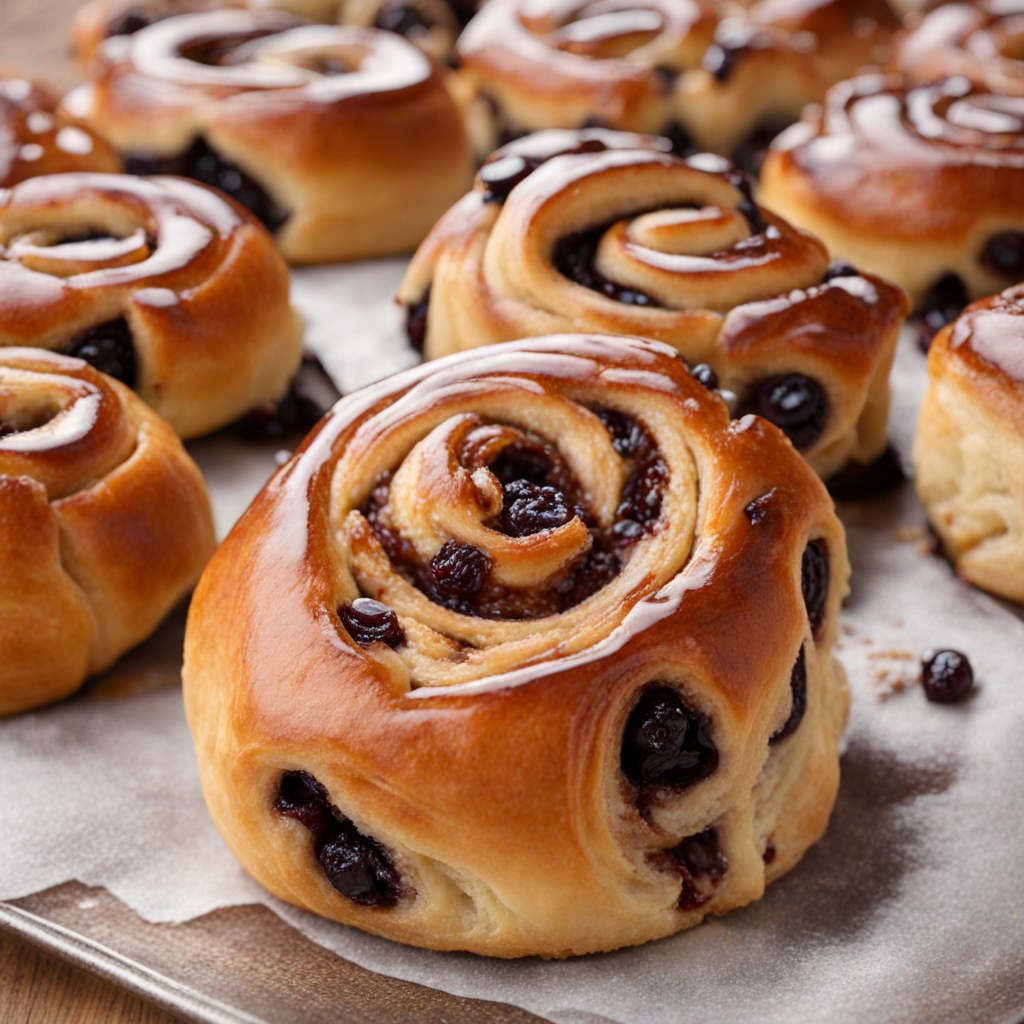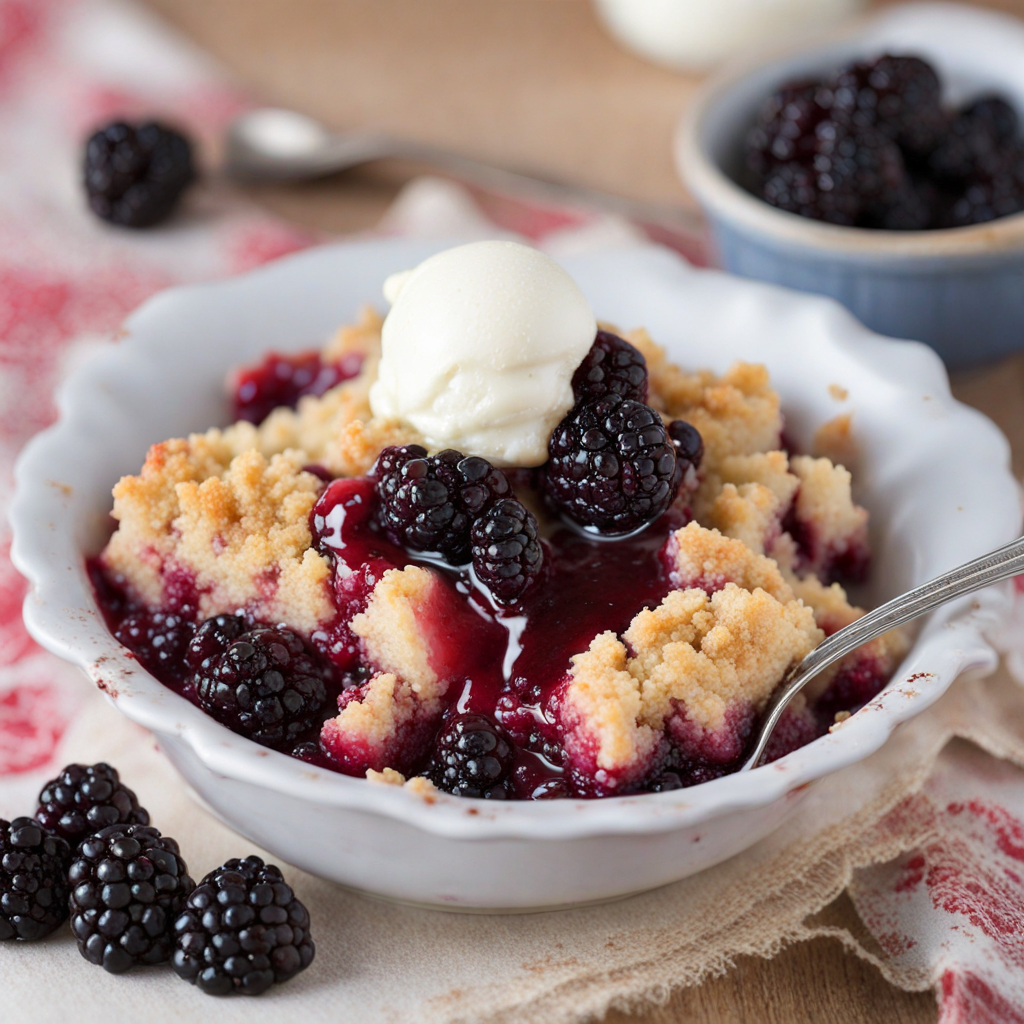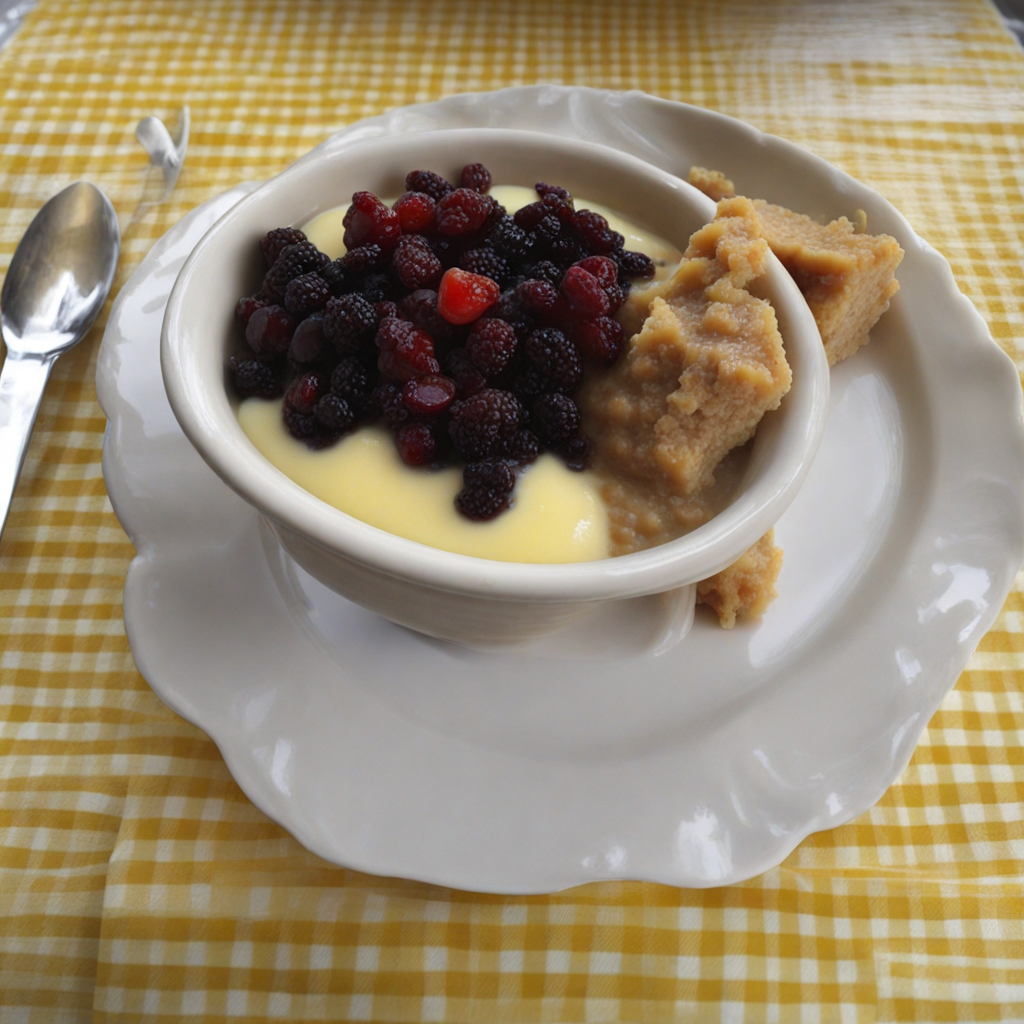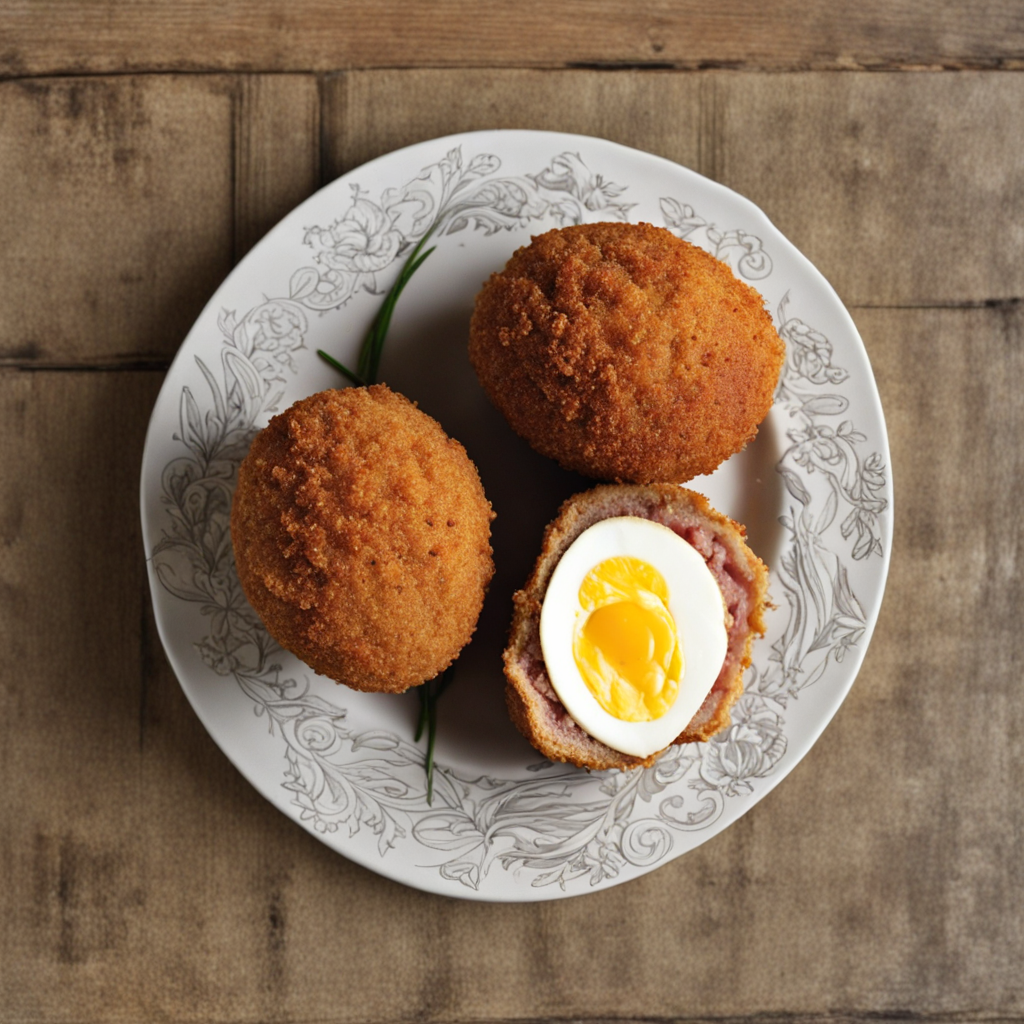Chelsea Buns
Chelsea Buns are a delightful British pastry that embodies the charm of traditional baking with a warm, comforting flavor. These sweet, sticky rolls are made from a rich, soft dough that is generously enriched with butter, sugar, and a hint of spice. The dough is rolled out and slathered with a mixture of cinnamon, currants, and sometimes other dried fruits, giving each bun a luscious filling that bursts with flavor. Once rolled and sliced, the buns are baked until golden and then brushed with a sweet syrup, creating a glossy finish that enhances their appeal. As you take a bite into a Chelsea Bun, you are greeted with a soft, pillowy texture that melts in your mouth. The combination of warm spices, sweet fruits, and buttery dough creates a harmonious blend of flavors that is both comforting and indulgent. The sticky glaze on top adds a delightful sweetness that balances perfectly with the spiced filling, making each bite feel like a warm hug. Whether enjoyed with a cup of tea or as a decadent treat on their own, Chelsea Buns are perfect for any occasion. Historically, Chelsea Buns date back to the 18th century and have a rich legacy in British culture. They were originally sold by street vendors in the Chelsea district of London, and their popularity has endured over the centuries. Today, they are often made at home or found in bakeries, cherished for their nostalgic value and taste. As you explore the world of Chelsea Buns, you'll not only discover a new flavor but also a piece of culinary history that continues to bring joy to many.
How It Became This Dish
The Story of Chelsea Buns: A Sweet Slice of British Culinary History #### Origins Chelsea Buns trace their origins to the 18th century in Chelsea, a district in West London, known for its affluent neighborhoods and artistic residents. The buns are believed to have been created at a bakery called "The Bun House," which was established in the area during the late 1700s. The establishment gained notoriety for its unique, sweet, and sticky rolls that captured the hearts of locals and passersby alike. The term "bun" itself has Old English roots, derived from the word "buna," referring to a rounded shape. Chelsea Buns are characterized by their rich, spiced dough—typically made with flour, butter, sugar, and yeast—which is rolled with cinnamon, currants, and sometimes nutmeg before being shaped into spirals. This combination of ingredients creates a delightful interplay of flavors, making the buns both indulgent and comforting. #### The Cultural Significance of Chelsea Buns As the 18th century progressed, Chelsea Buns became emblematic of British tea culture. The ritual of afternoon tea, gaining popularity during this period, created a demand for sweet treats to accompany the beverage. Chelsea Buns, with their inviting aroma and delectable taste, fit seamlessly into this new social custom. The buns also found their way into various literary works of the time, serving as a symbol of domesticity and the burgeoning middle class. Authors like Charles Dickens referenced Chelsea Buns in their writings, highlighting their popularity and the way they had become a staple in British households. The buns were not merely a food item; they represented a burgeoning sense of community and familial bonding over shared meals. #### Development Through the Centuries Throughout the 19th century, Chelsea Buns saw several adaptations and variations. The Industrial Revolution brought about significant changes in food production and consumption, leading to the rise of commercial bakeries that made these sweet treats more accessible to the general public. The original recipe underwent modifications, with bakers experimenting with different fillings and toppings. Some recipes incorporated ingredients such as orange peel or lemon zest, adding a refreshing twist to the traditional bun. During the Victorian era, Chelsea Buns became increasingly popular among the upper and middle classes, often served at elegant tea parties and social gatherings. The buns were often presented with a sense of ceremony, reflecting the era's emphasis on refinement and etiquette. Bakeries in Chelsea and beyond began to package these buns attractively, transforming them into desirable gifts. However, as the 20th century unfolded, the popularity of Chelsea Buns began to wane. The rise of mass-produced baked goods and the emergence of lighter, airier pastries shifted public tastes. Nevertheless, Chelsea Buns retained a nostalgic charm, and their historical significance was preserved in cookbooks and family recipes passed down through generations. #### The Revival: Rediscovering Chelsea Buns The late 20th century witnessed a resurgence of interest in traditional British baking, a movement fueled by the slow food movement and a growing desire for artisanal products. Chelsea Buns made a comeback, embraced by both home bakers and professional chefs. The rise of food bloggers and social media platforms allowed bakers to share their recipes and techniques, further popularizing this classic treat. Contemporary interpretations of Chelsea Buns often showcase creativity and innovation. Many bakers experiment with flavors, incorporating ingredients like chocolate, nuts, and various spices, while maintaining the essence of the original bun. The buns can now be found in artisanal bakeries across the UK and beyond, often featured prominently on breakfast and brunch menus. #### The Modern Chelsea Bun: A Culinary Icon Today, Chelsea Buns are celebrated not only for their delightful taste but also for their connection to British culinary heritage. They are often associated with special occasions, family gatherings, and festive celebrations. The buns serve as a canvas for creativity, with bakers putting their unique spins on the traditional recipe while still honoring its history. In addition to their culinary significance, Chelsea Buns have become a symbol of British identity, encapsulating the spirit of comfort and community. They are often enjoyed with a cup of tea, reminiscing about shared memories and the stories that bind families together. The buns have become a cultural artifact, representing the evolution of British baking and the enduring love for simple yet rich flavors. #### Conclusion The history of Chelsea Buns is a testament to the power of food to connect people across generations. From their humble beginnings in a Chelsea bakery to their status as a beloved national treat, these sweet rolls embody the essence of British culinary tradition. As we continue to explore and innovate within the realm of baking, Chelsea Buns remind us of the importance of honoring our culinary roots while embracing the future. Whether enjoyed during a quiet afternoon tea, gifted to a friend, or served at a vibrant family gathering, Chelsea Buns hold a special place in the hearts of many. They are not merely a food item; they are a symbol of history, culture, and the simple joys of life. As we indulge in these delightful treats, we partake in a rich narrative that spans centuries, celebrating the enduring legacy of Chelsea Buns in the tapestry of British cuisine.
You may like
Discover local flavors from United Kingdom







